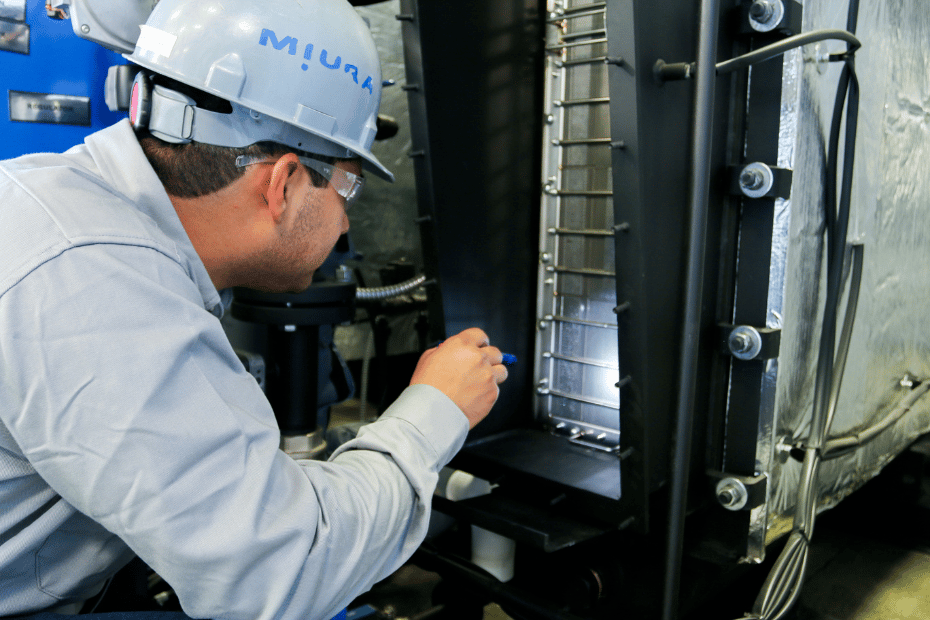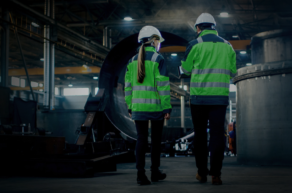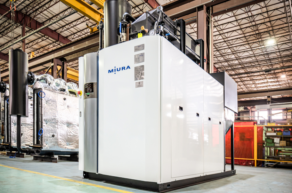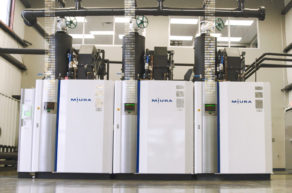Bottom and Surface Blowdowns on a Miura Steam Boiler – What You Need to Know
Bottom and top (or surface) blowdowns are routine preventative maintenance activities necessary for protecting your steam boiler system. They help eliminate harmful sediment, concentrated impurities, and ions inside a boiler that prevent optimal heat transfer between surfaces and can cause its metal components to rust, pit, or corrode.
Miura’s modular, on-demand steam boilers have several unique features that help streamline bottom and surface blowdown processes. This blog looks at how easy bottom and surface blowdowns are with a Miura boiler to keep it performing optimally.
Miura’s User-Friendly Bottom Blowdowns
Regular bottom blowdowns are recommended for a Miura steam boiler to remove any excess sediment (minerals, solids, and other corrosion products) that has settled at the bottom of the boiler or has started to build up in the piping. Flushing water out of the pressure vessel helps keep it clean for optimal performance.
In addition, adding a corrosion-inhibiting chemical, like Miura’s BOILERMATE®, helps inhibit corrosive ions from reacting with the boiler’s metal components.
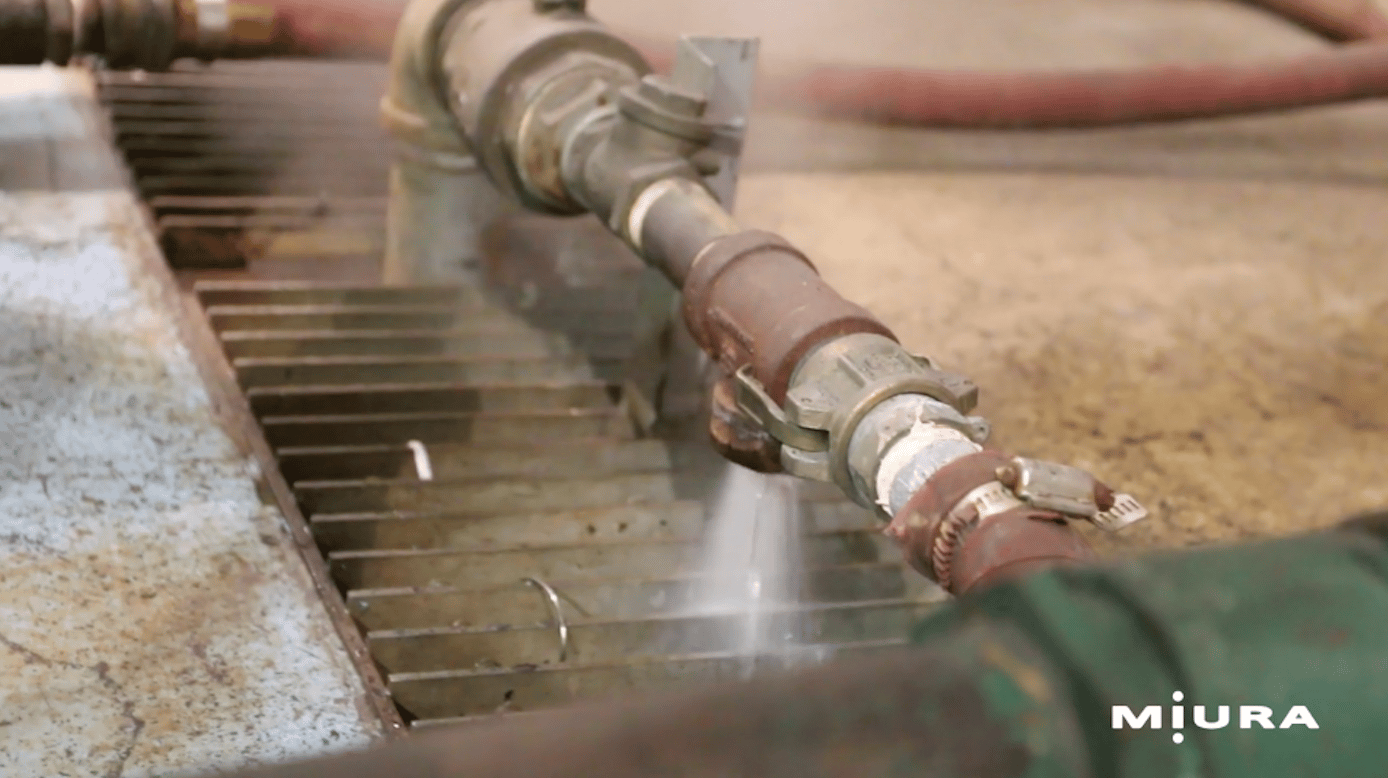
User-Friendly Monitoring Removes the Guesswork
One of the many benefits of a Miura boiler is that its built-in boiler control processor interface – or BL Controller – lets boiler operators know when it is time to perform a bottom blowdown. The BL controller monitor (pictured below) shows a “B” symbol anytime a bottom blowdown is needed.
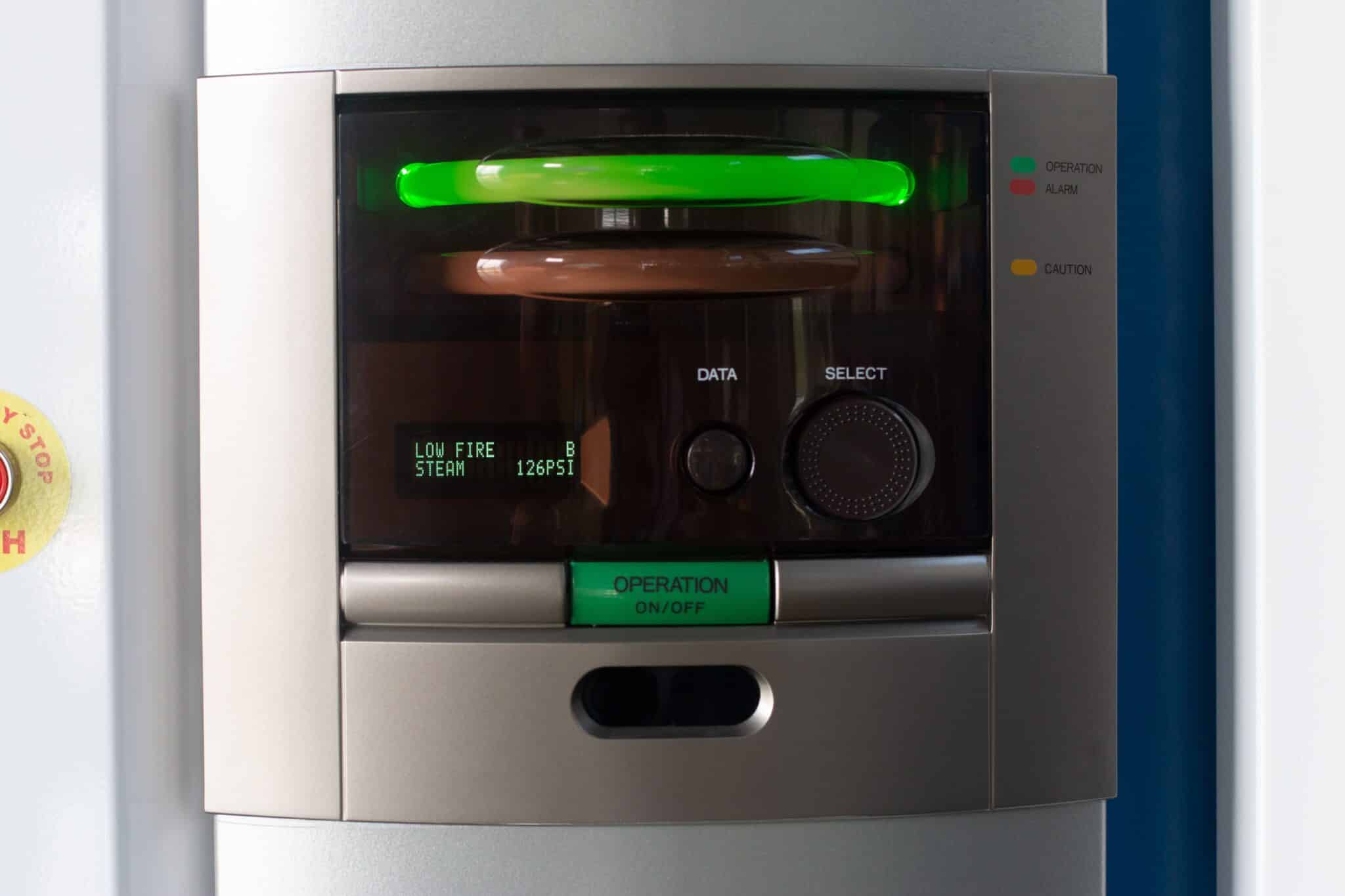
In traditional steam boilers, operators must keep a close eye on a water level indicator during the blowdown to know when the water level has dropped far enough to shut the bottom blowdown valve(s) in time. For a Miura boiler, the “B” symbol on the BL Controller disappears once enough of the water has drained (i.e., when water levels drop beneath the conductivity probe), alerting the operator that the blowdown is complete and it is time to shut the valve(s).
Another great feature of the larger Miura boiler models is the location of the bottom blowdown valves. Their position at the front of the boiler next to the BL Controller monitor makes it even easier for operators to perform the blowdown while keeping an eye on the BL Controller.
Modular Steam Boilers Enable Consistent Steam Production
Bottom blowdowns are best done in the morning or middle of the day – and not right at the end – so that the fresh boiler water has enough time to cycle up to liberate dissolved gasses and ensure the correct balance before the boiler is shut down for the night.
That said, boilers need to be taken offline for a bottom blowdown, so the procedure has to be scheduled around a plant’s or facility’s steam requirements; alternatively, a backup boiler is needed to ensure an uninterrupted steam supply.
Depending on a facility’s required daily or seasonal steam load, Miura’s multiple installation (MI) steam boiler systems typically consist of two to four compact steam boiler units. Only the boiler needing the bottom blowdown needs to be put into standby mode, leaving the rest of the boiler units to carry on with business as usual.
How to Perform a Bottom Blowdown on a Miura Boiler
Remember to wear the necessary Personal Protective Equipment (PPE) and follow all local codes and regulations. If the blowdown piping is designed and secured correctly, the boiler can be blown at full pressure; alternatively, ensure the boiler steam pressure is below 30 psi before proceeding.
Watch the full video for the steps followed to perform a bottom blowdown on a Miura boiler.
Miura’s Automated Surface Blowdowns
When boilers create steam, only pure water in the form of steam exits the boiler, leaving behind chemicals and other sediments. As boiler water is cycled up, it becomes more and more concentrated. Top (or surface) blowdowns help control concentrations of chemicals, impurities, or suspended solids in a boiler system.
Impurities in the water conduct electricity; this conductivity can cause water hardness and scale, decreasing a boiler’s efficiency and increasing its fuel consumption. Concentrated levels of dissolved solids in steam also lead to steam spaces filling with unburst steam bubbles and foam that can then enter the steam main, contaminating pipes, heat exchangers, and control valves.
Surface blowdowns remove some of the concentrated boiler water to manage the water’s conductivity. Typically, a conductivity probe measures steam boiler water’s electrical conductivity and alerts operators of the need for a surface blowdown.
Miura boiler’s surface blowdowns are automatic; when the probe inside a Miura boiler shows the electrical conductivity of the water is too high, the surface blowdown comes on automatically to bring the conductivity back down and ensure cleaner steam.
Routine Preventative Maintenance for Optimal Boiler Performance
Bottom and surface blowdowns are just two of several preventative maintenance activities to keep an industrial steam boiler performing optimally. In addition, regular boiler inspections ensure that a boiler’s internal components are routinely checked for scale build-up or damage like oxygen pitting or corrosion.
Miura’s boiler inspections and maintenance programs help mitigate the risk of unnecessary and expensive boiler downtime and ensure your Miura boilers offer ongoing in-service efficiencies. Regardless of your selected preventative maintenance program (Basic Inspection, MMIP, or the Full Maintenance Contract), you can expect a Miura technician to be in touch with you to schedule a boiler inspection every six months. As for the rest of the year, we offer remote monitoring and technical support through our Miura Online Maintenance system to help diagnose any issues.
Enjoy Even More Peace of Mind with Miura Connect
Miura’s remote monitoring service, Miura Connect, makes it even easier for boiler operators to track the health of their entire boiler room system. Miura Connect provides a real-time view of all connected and non-connected devices (water softeners and feedwater tanks) across multiple boiler rooms, which can be accessed using any smart device with internet connectivity.
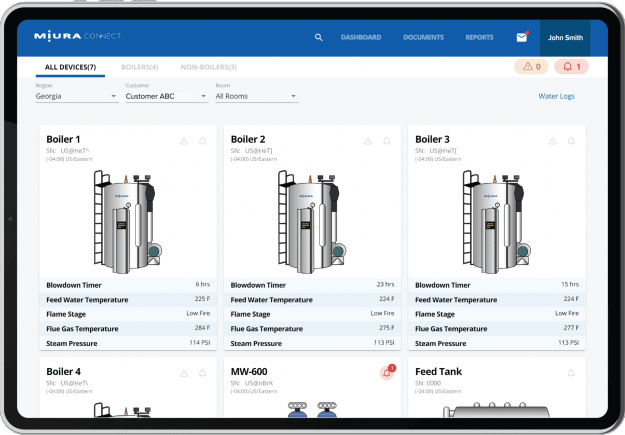
With Miura Connect, operators and facility managers can receive real-time boiler room notifications and alerts (SMS or emails) directly to these devices to resolve issues quickly.
Trust our built-in monitoring systems and boiler maintenance experts to protect your investment long-term. Contact a Miura Rep today to learn more about Miura Connect and our preventative maintenance services and programs.


